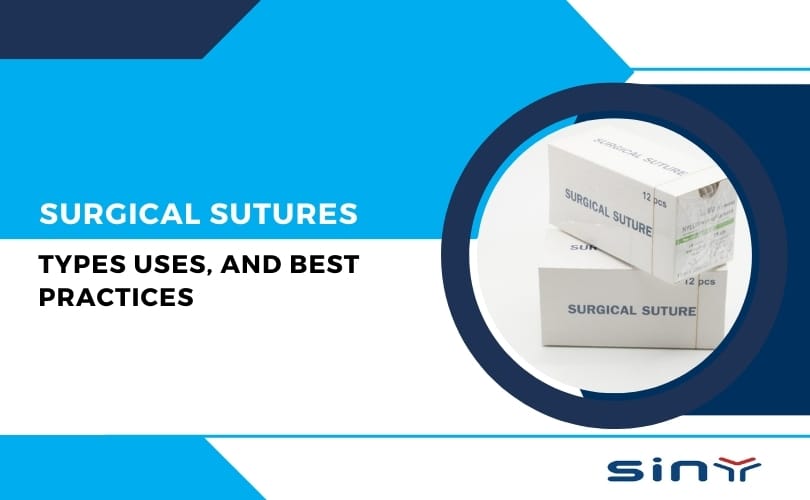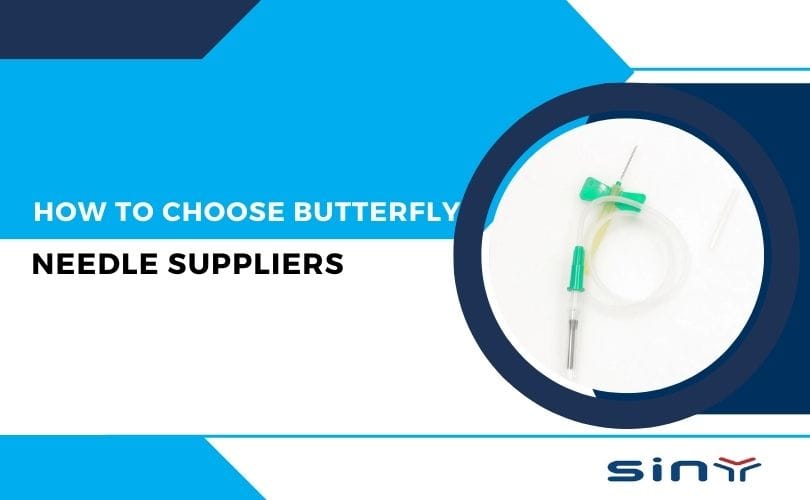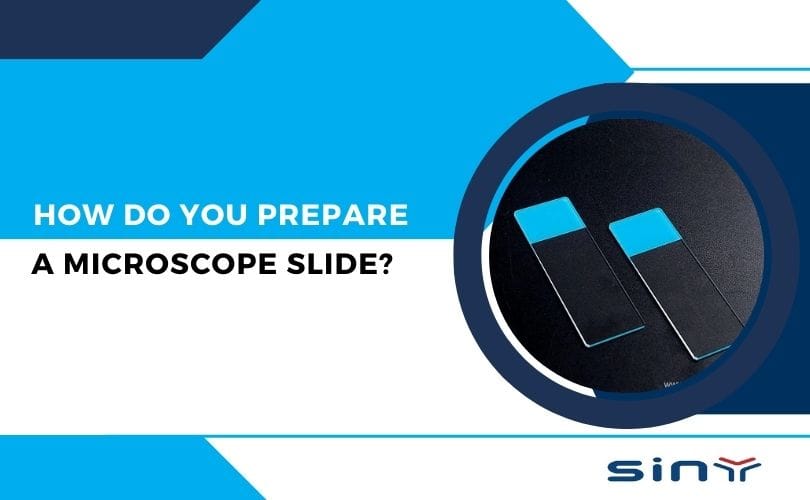Surgical sutures are essential medical tools used to close wounds, support healing, and play a crucial role in reducing the risk of infection, ensuring patient safety and confidence in the procedure. Understanding the various types of sutures, their specific applications, and best practices for use can significantly impact surgical outcomes. This comprehensive guide delves into the different types of surgical sutures, their uses across various medical fields, and best practices for selection and application.
Table of Contents
What Are Surgical Sutures?
Sutures are specialized threads or strands used by healthcare professionals to stitch together tissues following an injury or surgical procedure. They are typically made from various materials, which can be classified into two main categories: absorbable and non-absorbable sutures.
- Absorbable Sutures: These sutures dissolve over time as the body absorbs them. They are handy for internal wounds where suture removal is impractical.
- Non-absorbable Sutures: These sutures remain in the body until they are manually removed or left permanently. They are often used in areas where long-term support is required.
Types of Surgical Sutures
Surgical sutures can be categorized based on several factors, including material composition, structure, and absorption characteristics.

Absorbable Sutures
The body breaks down absorbable sutures over time. Surgeons commonly use them in internal surgeries and in areas where removing sutures would be difficult.
- Catgut Sutures: Made from animal intestines, catgut sutures are natural absorbable sutures that come in plain or chromic varieties.
- Polydioxanone (PDS): A synthetic monofilament suture that is highly versatile and used in various soft tissue repairs, including abdominal closures and pediatric cardiac procedures. PDS has a longer absorption time compared to catgut.
- Poliglecaprone (MONOCRYL): Another synthetic absorbable suture known for its excellent handling properties and minimal tissue reaction.
- Polyglactin (Vicryl): A braided absorbable suture provides good tensile strength and doctors commonly use it in general surgery, gynecology, and urology.
Non-absorbable Sutures
Non-absorbable sutures do not dissolve in the body, so healthcare providers may need to remove them after a certain period, or they may choose to leave them in place permanently.
- Silk Sutures: Natural, non-absorbable sutures known for their softness and flexibility. Healthcare professionals often use them in delicate procedures such as ophthalmic surgeries.
- Nylon Sutures: A synthetic monofilament suture that is strong and elastic, making it suitable for skin closures and cardiovascular surgeries.
- Polypropylene (Prolene): A synthetic monofilament suture often used in vascular surgeries due to its low tissue reactivity and excellent knot security.
- Polyester (Ethibond): A braided synthetic suture known for its high tensile strength, commonly used in orthopedic and cardiac surgeries.
Uses of Surgical Sutures
Surgical sutures have a wide range of applications across various medical fields. In general
- Surgery: Surgeons use them to close the skin after incisions or trauma.
- Orthopedic Surgery: Employed in repairing tendons or ligaments.
- Cardiac Surgery: Critical for closing incisions in heart procedures.
- Ophthalmic Surgery: Used to close delicate eye tissues.
- Gynecological Surgery: Applied during procedures such as hysterectomies.
Best Practices for Selecting Surgical Sutures
Choosing the appropriate suture type is crucial for successful surgical outcomes. Here are some best practices:

- Assess Wound Characteristics: Consider the wound’s location, size, and depth when selecting a suture type.
- Evaluate Patient Factors: Consider the patient’s medical history, allergies, and potential for scarring.
- Choose Material Wisely: Select between absorbable and non-absorbable based on whether the wound requires long-term support.
- Consider Suture Structure: Based on the risk of infection and ease of handling, decide between monofilament (single strand) and multifilament (braided).
- Follow Sterility Protocols: Ensure all sterile suturing materials to minimize infection risk.
Approaches for Applying Surgical Sutures
You can employ several techniques when applying surgical sutures.
1. Interrupted Sutures
This technique uses individual stitches that the surgeon ties off separately. It provides secure closure; if one stitch fails, others remain intact.
2. Continuous Sutures
A single strand of suture material runs along the length of the wound without cutting between stitches. This method can save time but may compromise security if a break occurs.
3. Deep Sutures
Surgeons place it beneath the skin layers to close deeper tissues while minimizing visible scarring on the surface.
4. Buried Sutures
These sutures hide the knot within the tissue layers to avoid irritation on the skin surface.
5. Subcutaneous Sutures
Surgeons place it just beneath the skin surface to provide support without visible stitches on the outer layer.
Conclusion
Selecting and applying the correct type of surgical suture is an essential skill in medical care that directly impacts patient recovery. By understanding the various types of sutures, techniques, and best practices, healthcare providers can ensure safer surgeries, fewer complications, and faster healing. As suture technology advances, the potential for even more effective and tailored wound care solutions is promising, enhancing outcomes and reducing recovery times.
FAQs
What are the primary types of surgical sutures?
Absorbable and non-absorbable sutures are the two main categories with specific uses and characteristics. Absorbable sutures dissolve in the body, while non-absorbable ones require removal.
How are sutures sized, and why is it important?
Suture sizes range from delicate to heavy, measured by the United States Pharmacopeia (USP) system. The right size is critical for effectively closing wounds and minimizing tissue damage.
When should sutures be removed?
Timing varies based on wound location and healing speed. You will remove facial sutures in about a week, while you may keep sutures on more extensive wounds on the back for up to two weeks.
What are barbed sutures, and where are they used?
PGCL sutures feature tiny barbs that eliminate the need for knotting. Surgeons commonly use them in minimally invasive surgeries due to their ease of use and ability to provide secure closure
You May Also Read
- What are Surgical Sutures?
- The Pros and Cons of Different Types of Surgical Sutures
- The Difference Between Absorbable and Non-Absorbable Sutures
- A Comparative Analysis of Surgical Suture Materials
If you enjoyed this article, please subscribe to our YouTube channel. We provide product video tutorials. You can also follow us on Instagram and Facebook to stay up to date with new updates, news and special deals.



























































